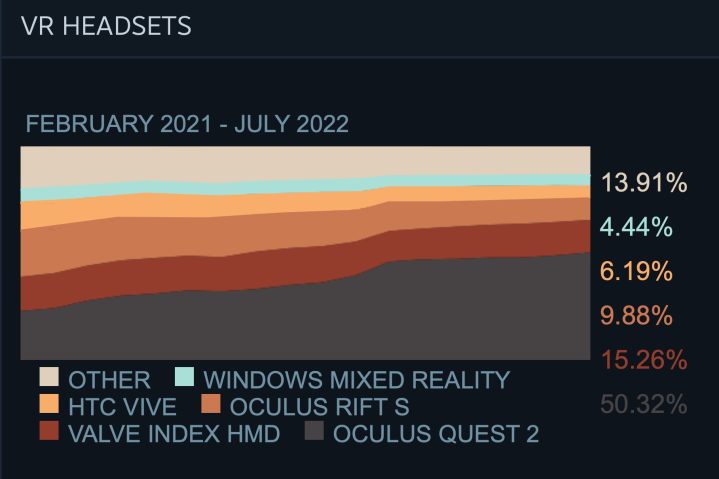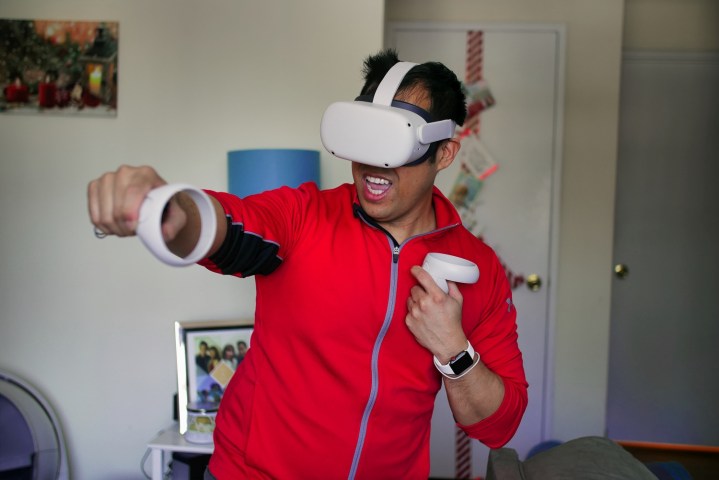VR gaming seems to have reached an all-time high, with a notable report suggesting a nearly four-times increase in users in the past month. Those figures come from a survey and might not be exact, but do indicate an ongoing trend of more and more people joining the VR gaming revolution.
It’s really not surprising since very affordable and solid VR systems have been around for several years. As early adopters help work out the bugs and introduce new players to the experience, virtual reality will undoubtedly continue to grow until it becomes another mainstream option.
The latest results recently came in from Steam’s Hardware & Software Survey, which is a monthly review of what types of computer hardware are being used. A list of VR headsets used with SteamVR is included in the data and the percentage of computers that are connected to Steam while using a VR headset is shown, and the results are pretty astounding.

What stands out is a huge increase in the use of VR headsets, climbing from an average of 1.87% to 6.67% of Steam players using a VR headset in July. Taken at face value, VR gaming just took a monumental step forward in terms of user base.
But as recently pointed out by UploadVR, there may be some problems with the numbers. A similar but lesser surge to 3.24% was seen in May before returning to about 2% in June. Since the survey is a random sample, it will vary over time and the overall average is a more useful number. A four-times increase in one month is highly unlikely; however, an overall rise does seem plausible.
Even if the size of the surge itself isn’t accurate, these results could show that the number of people that own VR headsets may be higher than what’s been previously reported.
Meta’s Quest 2 headset led the pack with a 50% share in July. It’s really a bit unfair to other manufacturers because Meta subsidizes the cost, giving this great quality headset an incredibly low price. Even with the recent price increase, it remains the most affordable, mainstream VR headset available.
Valve’s Index took the No. 2 position with 15%. Other Oculus (Meta) and HTC Vive VR headsets, having a wide variety of models, made up most of the remainder.

An overall increase in VR systems isn’t unexpected and follows the pattern of new technology, particularly in gaming. Arcade gaming inspired affordable, in-home console gaming which slowly got better and became more commonplace. Even early PC gaming was slow to get started since the internet didn’t exist and its lower-quality graphics couldn’t compete with well-established console gaming systems.
Now this story continues with VR headsets challenging the status quo as another fringe idea moves toward the mainstream. Virtual reality has had a particularly long incubation period, but it finally seems to slowly be winning people over.



